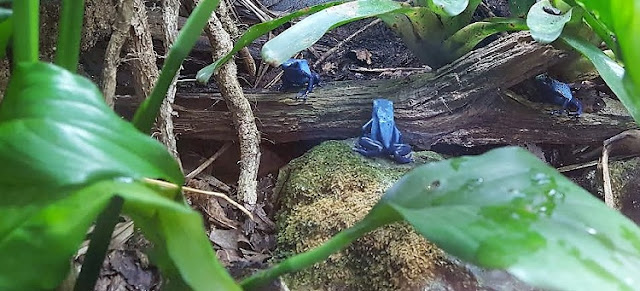 |
| Dyeing poison frog - Dendrobates tinctorius |
Although not as strong as some of the toxins produced by other genera of poison dart frogs, the pumilio-toxins that the dyeing poison frog uses for self-defense is sufficient to discourage most animals from feeding on them.
 |
| Dyeing poison frog - Dendrobates tinctorius |
It is an active species with a strong territorial instinct. They come into breeding condition between February and March, which is announced by the males calling loudly to attract females. Between two and six eggs are laid, which hatch after 14 to 18 days. In their native habitat the tadpoles are carried on the backs of both the male and the female to small, protected water pools found within rosette-leaved plants such as bromeliads. There is little to no available food in the pools, so over a period of two to three months, the female will return repeatedly to each tadpoles pool to lay an unfertilised egg for them to feed off. Over time the tadpoles develop into the adult and are sexually mature at around two years old.
In text image - Pogrebnoj-Alexandroff - Own work, CC BY 3.0, https://commons.wikimedia.org/w/index.php?curid=22487699
For related articles click onto the following links:
DYEING POISON FROG
THE MALAYAN LEAF FROG - Megophrys nasuta
THE WOLVERINE FROG
WHAT IS THE WORLD'S LARGEST FROG?
WHAT IS THE WORLD'S MOST POISONOUS FROG







No comments:
Post a Comment